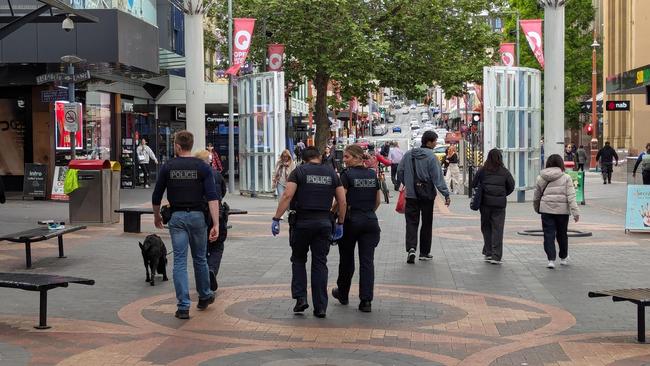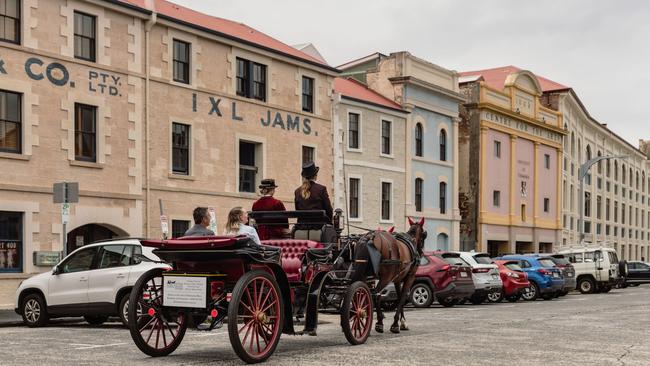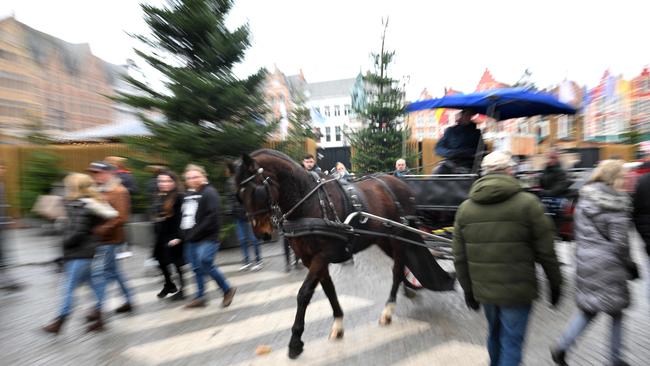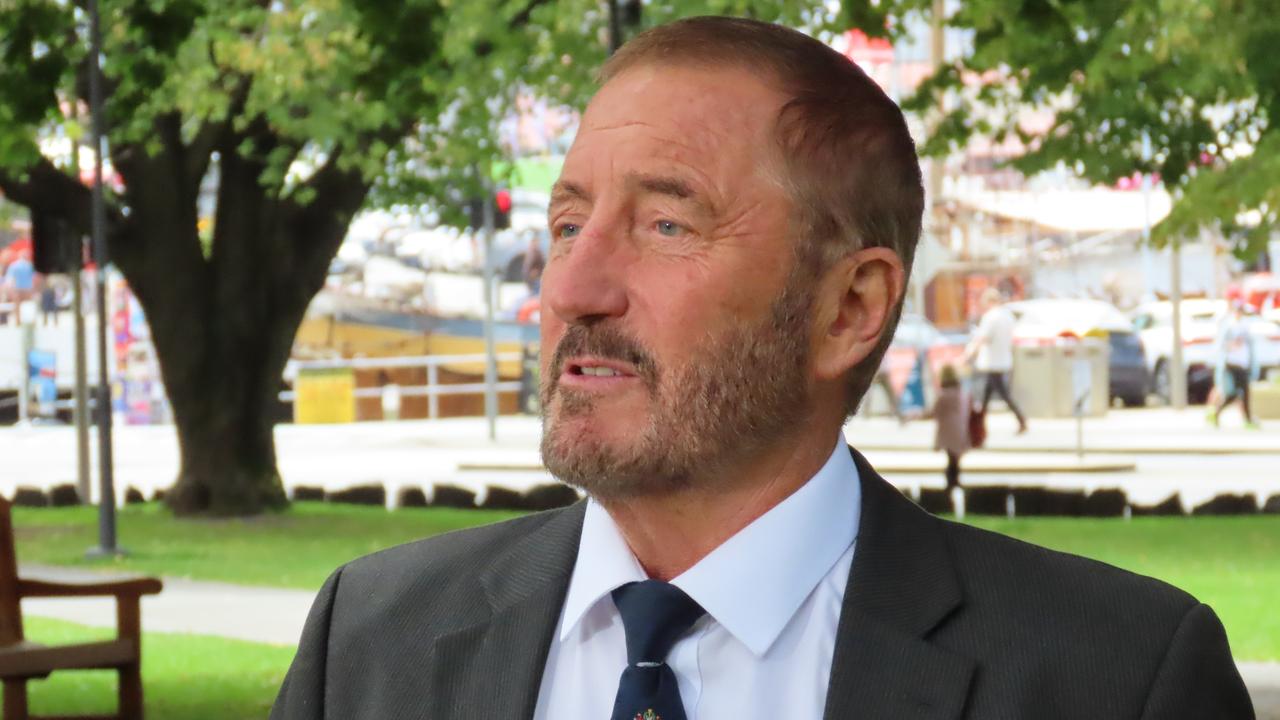Animal activists disrupt Hobart waterfront for ban on carriages
Police attended a protest by animal welfare activists on Hobart waterfront who called for an end to one of Hobart’s decade-long tourist attractions.

Tasmania
Don't miss out on the headlines from Tasmania. Followed categories will be added to My News.
Animal welfare protesters disrupted Hobart’s waterfront on Friday afternoon, demanding an immediate end to the city’s horse and carriage rides.
Police attended the scene after complaints that the protesters were frightening the horses, but no formal action was taken.
The carriage rides, a popular tourist attraction for over a decade, take visitors through Battery Point, Salamanca Place, and the Hobart waterfront. Each ride features two horses pulling a Victorian style buggy weighing 500–600kg without passengers.
Suzanne Cass, a long-time animal rights activist from Old Beach, described the practice as cruel and outdated.

“They’re dragging huge carts in heavy harnesses for hours and hours on end and inhaling traffic fumes,” Ms Cass said, citing concerns about leg and foot pain and respiratory issues for the animals.
“It’s just one of the worst welfare outcomes for any horse.”
Horse-drawn carriage rides were banned in Melbourne’s CBD in 2022 following the collapse and death of a carriage horse in 2021 while pulling passengers. While still allowed in park precincts, Melbourne’s remaining operators have warned the ban could end their century-old trade.
Globally, horse-drawn carriages have been banned in numerous cities due to animal welfare concerns, including in Europe and the US.
Sharon Armstrong and Steve Olive, who have operated Hobart’s carriage rides for a decade, said their horses were rescued from slaughter or retired from racing.
“As racing trotters, their chances of rehoming are slim as they’re not desired as riding horses, but they’re perfect for carriage work,” Ms Armstrong said.

“We train them incrementally and earn their trust so they know we will never put them in a harmful situation. In 10 years, we’ve never had an accident.”
The horses live on a farm in the Huon Valley and work no more than two days a week, for six hours a day, Ms Armstrong said.
“They wear special boots or polyurethane shoes to minimise slipping and leg impact,” Ms Armstrong said. “We only operate in low-speed areas, and the horses are extremely comfortable working in traffic.”
However, US animal activist Madhu Anderson, who attended the protest, argued that horses have no place in modern urban environments.
“My heart actually sank when I saw the horse-drawn carriages,” Ms Anderson said.
eleanor.dejong@news.com.au
Originally published as Animal activists disrupt Hobart waterfront for ban on carriages




